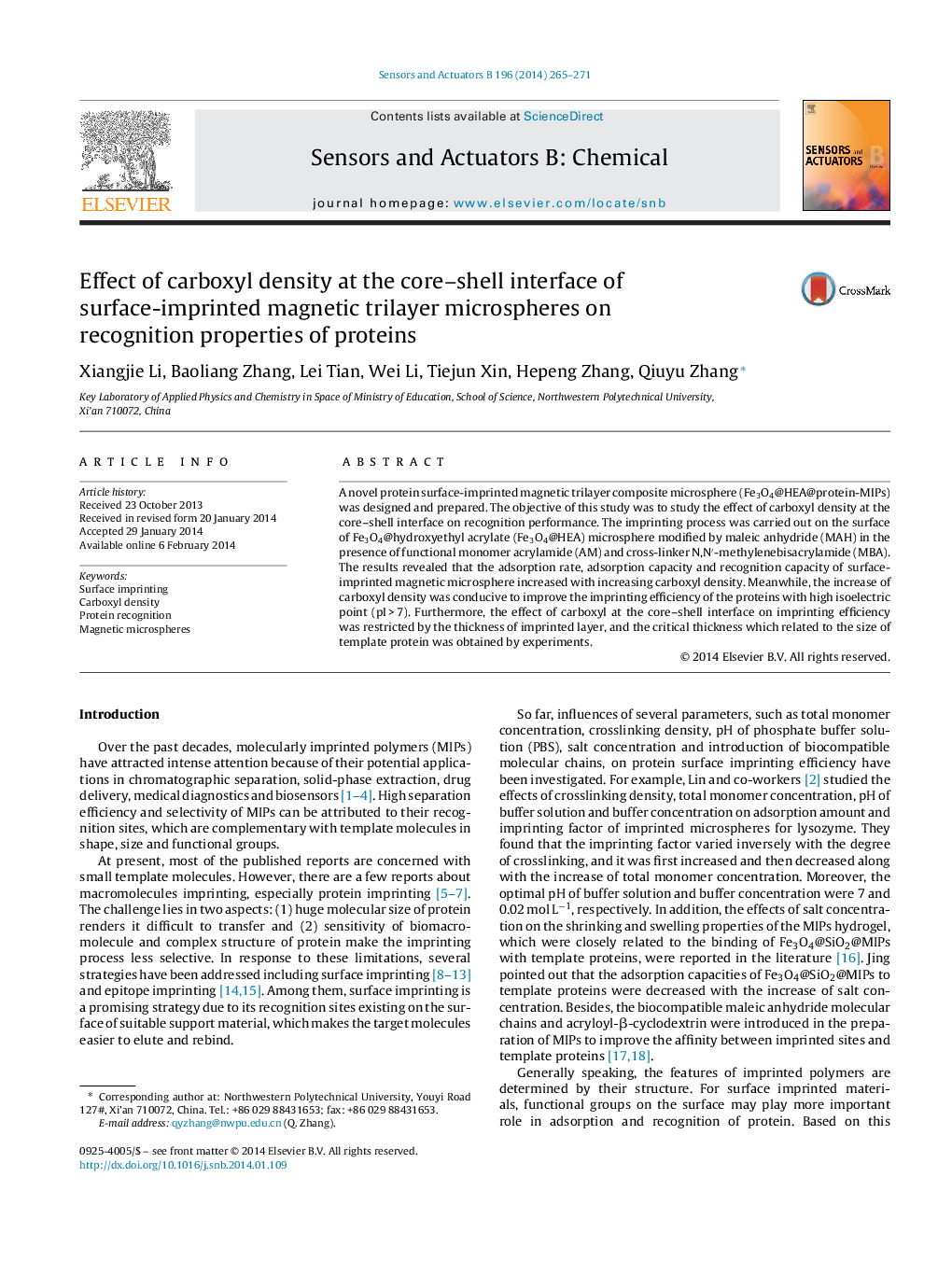| Article ID | Journal | Published Year | Pages | File Type |
|---|---|---|---|---|
| 750907 | Sensors and Actuators B: Chemical | 2014 | 7 Pages |
A novel protein surface-imprinted magnetic trilayer composite microsphere (Fe3O4@HEA@protein-MIPs) was designed and prepared. The objective of this study was to study the effect of carboxyl density at the core–shell interface on recognition performance. The imprinting process was carried out on the surface of Fe3O4@hydroxyethyl acrylate (Fe3O4@HEA) microsphere modified by maleic anhydride (MAH) in the presence of functional monomer acrylamide (AM) and cross-linker N,N′-methylenebisacrylamide (MBA). The results revealed that the adsorption rate, adsorption capacity and recognition capacity of surface-imprinted magnetic microsphere increased with increasing carboxyl density. Meanwhile, the increase of carboxyl density was conducive to improve the imprinting efficiency of the proteins with high isoelectric point (pI > 7). Furthermore, the effect of carboxyl at the core–shell interface on imprinting efficiency was restricted by the thickness of imprinted layer, and the critical thickness which related to the size of template protein was obtained by experiments.
